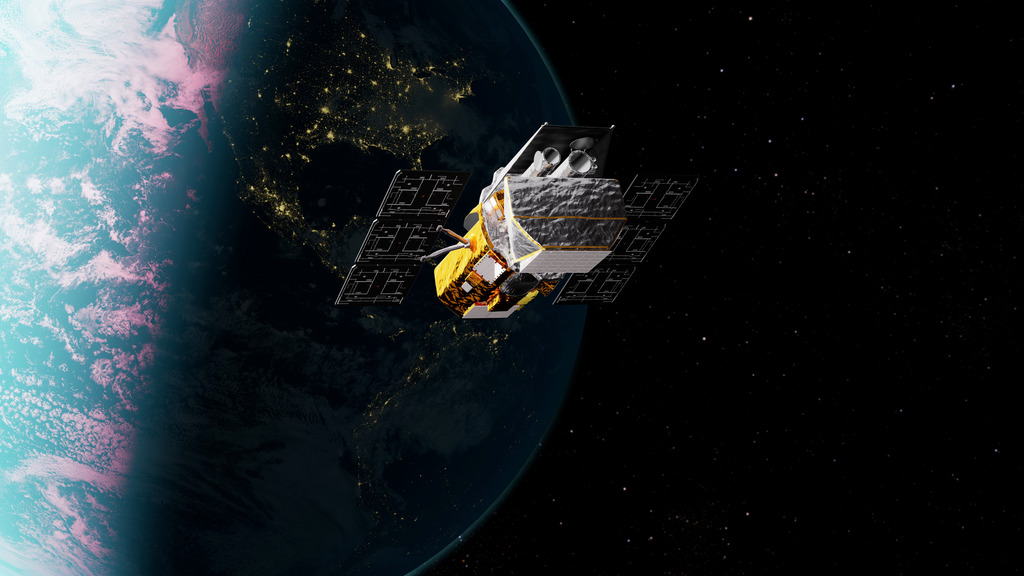Innovative Leap in Space: NASA and Katalyst Space Technologies Collaborate
In a groundbreaking move to propel the American space sector forward, NASA has partnered with Katalyst Space Technologies from Flagstaff, Arizona. The collaboration involves a contract to elevate the orbit of a spacecraft, showcasing a pivotal advancement in space exploration. Katalyst’s robotic servicing spacecraft will engage with NASA’s Neil Gehrels Swift Observatory, lifting it to a higher orbit and thereby extending its scientific mission.
Swift’s Mission and the Challenge of Orbital Decay
NASA’s Swift, launched in 2004, has been pivotal in studying gamma-ray bursts, the universe’s most intense explosions. Over time, its low Earth orbit has been gradually descending, a common fate for satellites. However, increased solar activity has accelerated this decay, presenting a unique opportunity to enhance American spacecraft servicing capabilities rather than allowing Swift to reenter Earth’s atmosphere.
Accelerating Innovation Through Industry Collaboration
“This partnership to elevate Swift’s orbit exemplifies NASA’s commitment to national progress,” stated Nicky Fox, associate administrator of the Science Mission Directorate at NASA Headquarters. “By swiftly adopting innovative commercial solutions, we are bolstering the space industry and reinforcing American leadership in space. This ambitious mission will demonstrate our ability to transition from concept to execution in under a year, a crucial capability as we aim to return humans to the Moon and venture to Mars and beyond under the Artemis program.”
Targeting a 2026 Orbit Boost
The orbit elevation is planned for spring 2026, with NASA closely monitoring solar activity that could affect this schedule. A successful mission would mark the first instance of a commercial robotic spacecraft capturing a government satellite that was not initially designed for in-space servicing.
Embracing Commercial Technologies for Swift’s Future
“With Swift’s orbit rapidly declining, we are racing against time. By utilizing commercial technologies already in development, we are tackling this challenge head-on,” said Shawn Domagal-Goldman, acting director of the Astrophysics Division at NASA Headquarters. “This approach is both cost-effective compared to launching a new mission and beneficial for the nation, as it broadens the scope of satellite servicing to include a wider range of spacecraft.”
Swift’s Role in Cosmic Exploration
Swift is a leader among NASA’s space telescopes, crucial for observing high-energy cosmic events. It acts as a “dispatcher,” providing essential data that enables other missions to delve deeper into cosmic phenomena. For over two decades, Swift has expanded our understanding of everything from supernovae and stellar flares to comets and high-energy lightning on Earth.
Funding and Future Prospects
NASA has allocated $30 million to Katalyst under a Phase III award through the NASA Small Business Innovation Research (SBIR) Program, managed by the Space Technology Mission Directorate. This funding accelerates the orbit boost project, addressing the urgent need due to Swift’s decaying orbit.
Advancing the Space Economy
“America’s space economy is thriving with innovative solutions, and opportunities like this enable NASA to address real-world challenges,” said Clayton Turner, associate administrator of NASA’s Space Technology Mission Directorate. “Orbital decay is a natural occurrence for satellites, and this collaboration could pave the way for extending the lifespan of more spacecraft. By partnering with industry, NASA promotes rapid, agile technology development, enhancing capabilities for today’s missions and unlocking future discoveries.”
About the NASA SBIR Program
The NASA SBIR program is part of America’s Seed Fund, the largest source of early-stage, non-dilutive funding for innovative technologies in the nation. It supports entrepreneurs, startups, and small businesses with fewer than 500 employees, providing funding and resources to develop, mature, and commercialize technologies that advance NASA missions and address national challenges.
Swift Mission Management and Partnerships
NASA’s Goddard Space Flight Center in Greenbelt, Maryland, manages the Swift mission in collaboration with Penn State, Los Alamos National Laboratory in New Mexico, and Northrop Grumman Space Systems in Dulles, Virginia. Other partners include the UK Space Agency, University of Leicester, Mullard Space Science Laboratory in the UK, Brera Observatory in Italy, and the Italian Space Agency.
For more information about the Swift mission, visit:
-end-
Alise Fisher / Jasmine Hopkins
Headquarters, Washington
202-358-2546 / 321-432-4624
alise.m.fisher@nasa.gov / jasmine.s.hopkins@nasa.gov
